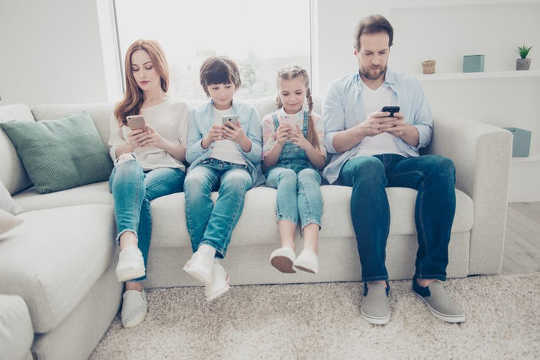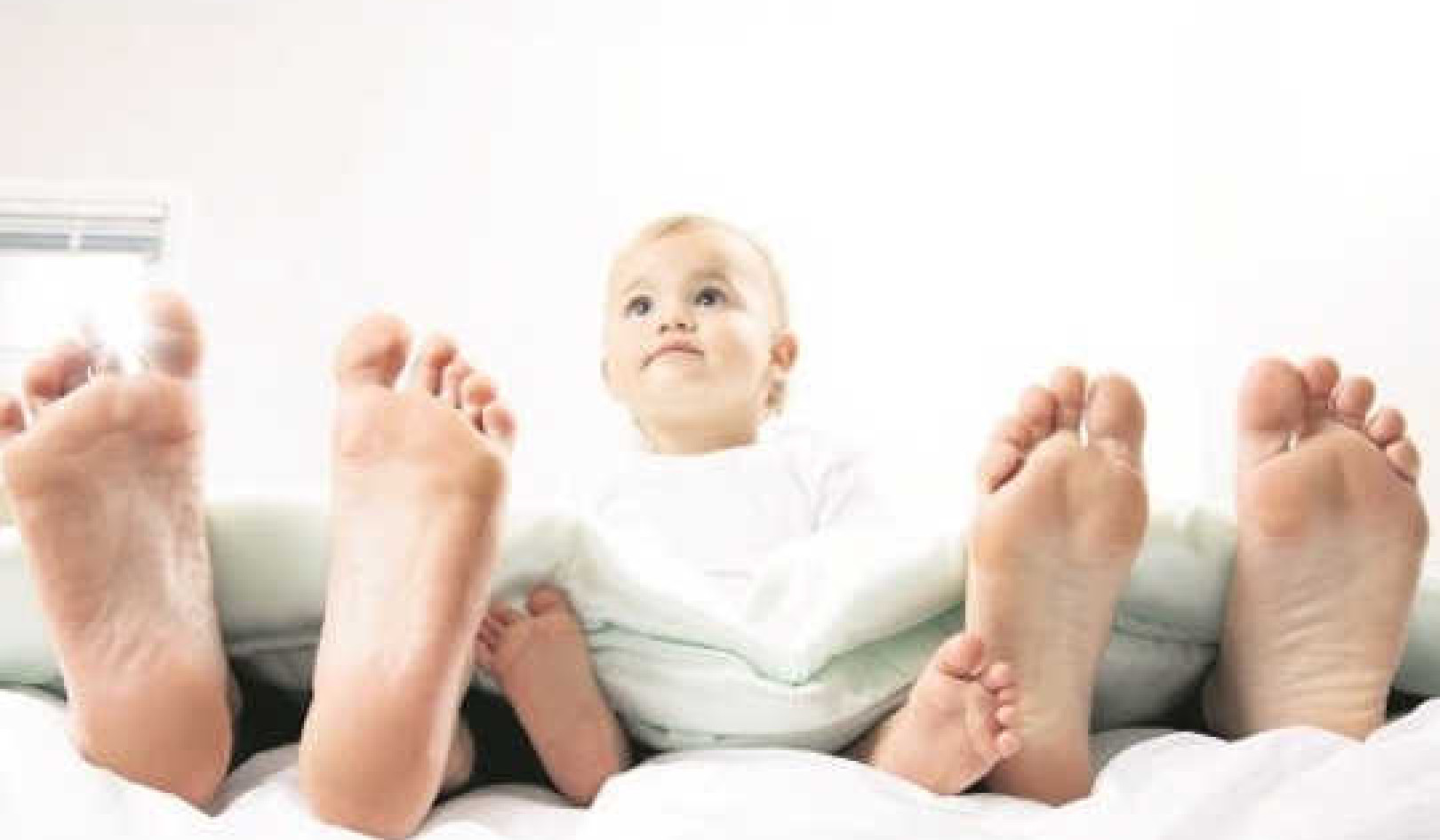 Shutterstock
Shutterstock
There is now widespread concern about the amount of time children spend staring at screens – with many people worried about the negative impacts mobile devices might have on health and well-being.
Concerns have also been raised about the influence of technological change on relationships and face-to-face interactions. Sherry Turkle, a professor of the social studies of science, came up with the famous term “alone together” – which is also the name of her book. “Alone together” captures this idea of spending time on devices to the neglect of interacting with those who are physically nearby.
Many people believe that technological changes have had a detrimental impact on the time family members spend together – with “alone together” time colonising family life. Yet, to date, very few studies have actually been done in this area.
Our new research looks to change this, by providing the first real insight into how technology has impacted the way families spend their time in the UK. To do this, we analysed time diaries collected by parents and children aged eight to 16 years-old in 2000 and then again in 2015 – a period that has witnessed rapid technological change.
More time at home and alone
Contrary to expectations, we found that children spent more time around their parents in 2015 than in 2000. This equates to just over half an hour extra a day (347 minutes per day in 2000 and 379 minutes in 2015). Notably, all of this additional time near parents was spent at home.
This was a surprising finding. But looking closer, we found that children reported they were “alone” during all of this additional time at home with their parents. In this sense then, “alone together” time has increased.
Our analysis also showed some relatively small changes in time for shared family activities, with contemporary families spending less time watching TV and more time on leisure activities and family meals. But the overall time spent in shared activities has remained the same.
Our data shows that mobile device use cuts across all aspects of family time. We found that children and parents both spent approximately the same amount of time (around 90 minutes) using mobile devices when together.
We found all these patterns to be particularly pronounced among young people aged 14 to 16. Young people in this group spent around one hour more at home “alone” with their parents in 2015 than in 2000. Mobile device use when near their parents was also more frequent and heavily concentrated.
Lack of quality time?
Academics have long noted the capacity for technology to bring families together at home. And while our research does seem to indicate this could be the case, this increase in time at home may also be associated with other issues such as the parent’s concerns for their children’s safety. Research in the US finds similar patterns of change – with teens spending less time outside the home away from their parents.
 More time together, but less time spent engaging with each other. Shutterstock
More time together, but less time spent engaging with each other. Shutterstock
There is increasing evidence that the mere presence of a phone negatively affects face-to-face interactions. This may go some way then to explain parents’ perceptions of decreasing family cohesion and time together with their children, reported in earlier studies.
Indeed, we found that both children and parents were using mobile devices during family meals, television viewing, and other activities. So even though this was for a relatively small amount of time, it may have a disproportionate impact on the quality of this time for family members.
Of course, in some cases, it is possible that mobile devices are in fact complementing family interactions. If, for example, family members use them for video streaming, to play group games or to contact other relatives. And further research on mobile device use and content is now necessary to help ascertain their full impact on daily life and move beyond commonly held negative assumptions.
But what is clear, is that although a rise in “alone together” time means families now spend more time at home, it is not necessarily in a way that feels like quality time.![]()
About The AuthorS
Stella Chatzitheochari, Associate Professor in Sociology, University of Warwick and Killian Mullan, Lecturer Sociology and Policy, Aston University
This article is republished from The Conversation under a Creative Commons license. Read the original article.
Related Books:
at InnerSelf Market and Amazon


























